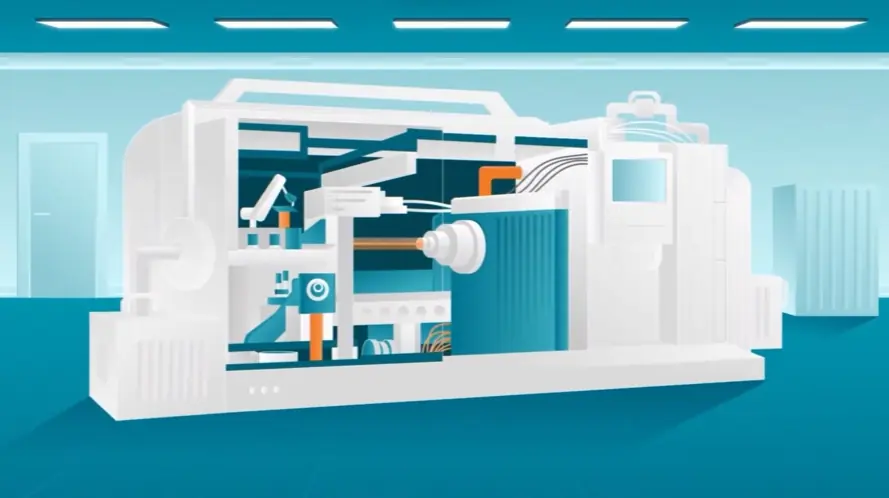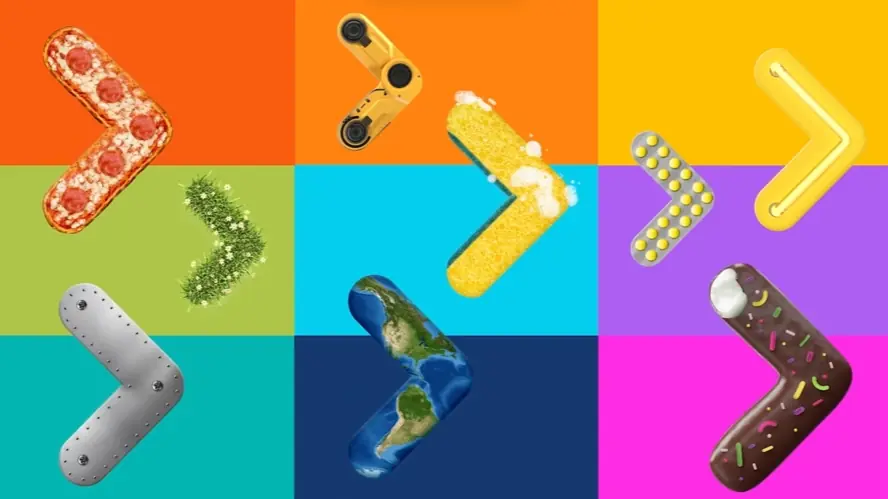How animation visualizes technical concepts effectively
We see how animation uniquely brings complex technical concepts into clear view. It transcends static diagrams and written explanations, allowing us to explore the unseen and understand intricate workings. This visual power makes challenging subjects accessible.
Think about how we can reveal internal workings, peering inside complex machines or systems otherwise hidden. We can illustrate abstract principles, showing invisible forces acting or energy flowing. Animation helps us simplify complex systems, breaking down intricate structures layer by layer. We show processes over time, watching mechanisms function step-by-step or demonstrating assembly sequences.
- Visualize data dynamically turning numbers into moving insights we easily grasp.
- Highlight specific components focusing attention precisely where needed for understanding.
- Demonstrate scale changes zooming from microscopic details to massive structures seamlessly.
- Explain cause and effect linking actions to reactions clearly showing functional relationships.
Whether it is a detailed machine animation video showing gear trains, a mechanical animation video explaining stress distribution, or a scientific animation video illustrating molecular interactions, engineering animation videos unlock understanding for everyone.
Showcasing product features through animation
We find animation offers a unique lens for showcasing product features. It allows us to move beyond static images or simple demonstrations, providing viewers with a deeper understanding of how something works, what it looks like inside, and the value it truly delivers.
When dealing with intricate designs or complex mechanisms, animation becomes indispensable. It grants us the power to visualize the unseen, simplifying complicated processes into easily digestible visuals that resonate with our audience.
- We can reveal internal workings. A 3D engineering animation video shows gears turning or systems flowing, making the invisible visible.
- We demonstrate functionality in action. A technical visualization video illustrates how a product performs in various scenarios or environments.
- We highlight design and structure. A product design animation video showcases form and detail, while an architectural animation video explores building features.
- We connect features directly to benefits, visually explaining the 'why' behind the design choices and their impact on the user.
This approach ensures clarity and helps potential customers quickly grasp the product's innovation and value.
Breaking down complex engineering processes using animation
We know video engages, but how do we tackle the sheer complexity inherent in engineering? Systems interact, mechanisms move unseen, and processes span vast scales. Animation provides our unique lens, allowing us to peel back layers, visualize the invisible, and simplify the intricate details that define engineering marvels.
It is not just about showing a product; it is about revealing its inner workings, demonstrating principles, and illustrating workflows that are impossible with live action alone. We make abstract concepts tangible and operational sequences clear.
- When we need to show exactly how a new piece of equipment functions internally, an engineering animation demo video reveals every gear and flow path with precision.
- Visualizing entire factory workflows or chemical reactions requires an industrial process animation video, mapping complex steps and interactions seamlessly.
- Explaining intricate building stages or structural assembly is best done with a construction process animation video, guiding viewers through the build sequence step by step.
- For quick understanding on social platforms, a short animation video distills complex ideas into easily digestible visuals, perfect for capturing attention fast.
Through animation, we transform daunting technical information into clear, compelling visuals that everyone can grasp, driving understanding and action.
Exploring advantages of animated simulations in engineering
We find animated simulations offer unique power in the engineering world. They let us move beyond static diagrams, bringing complex systems to life. We can visualize intricate internal workings and demonstrate how products perform under various conditions, capabilities difficult to show otherwise.
An engineering animation 3D video allows us to peer inside machinery, revealing details impossible with live action. When creating an engineering animation product video, we focus on showing its dynamic capabilities and function in realistic scenarios. This virtual testing helps us identify potential flaws early, saving significant time and resources compared to physical prototypes.
- We simulate real-world stresses safely.
- We simplify technical communication for any audience.
- For intricate systems, an engineering animation explainer video helps us clarify principles step-by-step.
- Looking at an engineering animation videos example, we immediately grasp the power of visualizing complex ideas.
Ultimately, animated simulations build confidence in designs and products, making complex engineering concepts accessible and understandable for everyone involved.
Animating intricate machinery for enhanced clarity
We know understanding complex systems can be challenging. Static images or lengthy manuals often leave gaps. This is where animating intricate machinery truly shines. We use 3D visuals to demystify the internal workings, showing viewers exactly how things operate beneath the surface. It transforms abstract concepts into tangible, moving realities.
Our approach focuses on clarity. We break down daunting assemblies and processes into easily digestible steps. This visual storytelling makes learning intuitive, whether explaining a product's function or a maintenance procedure. It's about unlocking understanding and building confidence in the technology.
- Revealing hidden mechanisms A machine animation video example lets us peel back layers showing components interacting in real-time.
- Demonstrating operational flow For a mechanical animation video example we illustrate the sequence of movements explaining function through dynamic visuals.
- Visualizing internal processes A scientific animation video example can show energy transfer or fluid dynamics within the equipment making the invisible clear.
- Placing within context An architectural animation video example helps viewers see how the machinery fits into its larger environment or system.
Ultimately animating machinery ensures your innovation is not just seen but truly understood.
Diverse uses of scientific animation within engineering
We see scientific animation as a powerful lens into the world of engineering. It allows us to move beyond static diagrams, bringing complex systems and invisible forces to life. This visual approach helps us communicate intricate ideas, from the microscopic behavior of materials to the vast scale of urban infrastructure projects. It's how we make the theoretical tangible and the complex understandable for engineers, stakeholders, and the public alike.
Across the field, a 3D engineering animation video example showcases incredible versatility. Often, a technical visualization video example helps us interpret complex data from simulations, revealing stress points or fluid flow patterns. For new hardware concepts, a product design animation video example can reveal intricate internal mechanisms before physical prototypes exist. Teaching complex procedures becomes clearer with an engineering animation demo video example, streamlining training and improving safety.
This ability to visualize the unseen is invaluable.
Understanding budget considerations for engineering animation
Understanding budget considerations for engineering animation
Moving from planning the story and purpose, we naturally consider the investment required. Engineering animation video costs vary significantly, reflecting the unique demands of visualizing complex technical subjects. We explore the key factors that shape the budget, helping us navigate the process effectively together.
Every engineering animation 3D video example begins with defining the visual fidelity and complexity, which fundamentally shapes the investment required. The level of detail needed for machinery, environments, and processes directly impacts the time and expertise involved in modeling, texturing, and animation.
- When we create an industrial process animation video example, the intricate movements and internal workings demand significant modeling and animation effort, directly impacting cost.
- Similarly, a construction process animation video example involves detailed environmental setup and sequencing across time, adding layers of complexity and cost.
- While even a short animation video example requires foundational creative and technical setup, the overall length remains a major determinant of the final budget.
- Factors like script complexity, voiceover quality, music, sound design, and the number of revision rounds also contribute to the final price.
Ultimately, understanding these elements allows us to align the creative vision with practical financial realities, ensuring a valuable outcome.
Essential project timeline for engineering animation
We often wonder how complex ideas transform into clear visuals. Whether creating an engineering animation product video example or a detailed process explanation, a structured timeline guides our work. This journey ensures every detail receives attention, moving from initial concepts to final polished output.
Our process unfolds through distinct phases:
- Initial concept discussion scope definition
- Script development finalization
- visual style exploration storyboard creation approval
- Voiceover recording
- 3D modeling assets rigging
- Animation blocking lighting camera setup
- Rendering frames sequences
- Sound design music integration editing assembly
- Client review feedback rounds
- Final delivery format export providing the engineering animation videos sample
Following these steps helps us produce an effective engineering animation explainer video example. It ensures a detailed machine animation video sample captures necessary technical accuracy while remaining engaging for viewers.
Choosing right animation style a practical guide
Choosing the right animation style for technical content feels like selecting the perfect lens to view complexity. We aim to make intricate details understandable, engaging viewers by showing not just what something does, but how it works inside. This means considering our audience's background and the specific engineering or scientific principles we need to convey.
Different styles serve different purposes. Sometimes we need photorealism to build trust, other times a simplified, stylized approach cuts through clutter. The goal is always clarity and impact, ensuring our message resonates and drives understanding.
- When showing complex machinery, seeing a mechanical animation video sample truly helps grasp internal workings.
- Illustrating abstract concepts or processes often benefits from exploring a scientific animation video sample.
- Bringing structures or urban plans to life shows impact; an architectural animation video sample excels here.
- Simplifying intricate data or systems requires clear communication, a strong technical visualization video sample provides insight.
Ultimately, the chosen style must serve the story, making the complex compelling and accessible for everyone watching.
Measuring performance of engineering animation methods
Creating compelling engineering animation videos is just the start. We know understanding their true impact requires rigorous measurement. It is not enough to simply publish; we must evaluate how well they connect with our audience and drive desired outcomes. This means looking beyond simple view counts to gather meaningful data.
Measuring performance helps us refine our strategy and prove video value. Whether we are analyzing a product design animation video sample or an industrial process animation video sample, key metrics guide our understanding. We focus on several critical areas to gauge success.
- Engagement metrics likes shares comments show how viewers interact.
- Conversion metrics leads inquiries sales demonstrate tangible business results.
- Traffic metrics measure clicks to websites product pages indicating interest.
- Awareness metrics track reach impressions showing audience exposure.
We analyze audience retention graphs to see where viewers drop off. Comparing performance across different platforms provides insights. Using data from every 3D engineering animation video sample helps us iterate and improve. Reviewing an engineering animation demo video sample against its initial goals ensures our efforts yield measurable success.
























